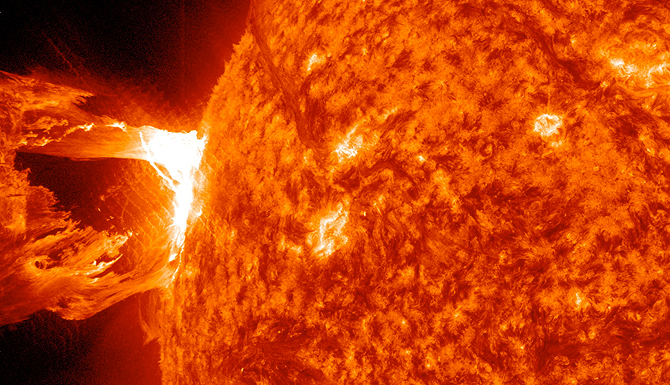On Friday, Feb. 15, NASA Television will provide commentary from 2 – 2:30 p.m. EST during the close, but safe, flyby of the small near-Earth asteroid named 2012 DA14. The half-hour broadcast from NASA’s Jet Propulsion Laboratory in Pasadena, Calif., will incorporate real-time animation to show the location of the asteroid in relation to Earth, along with live or near real-time views of the asteroid from observatories in Australia, weather permitting. The commentary will be available via NASA TV and streamed live online at https://www.nasa.gov/ntv and http://www.ustream.tv/nasajpl2.
In addition to the commentary, near real-time imagery of the asteroid’s flyby, made available to NASA by astronomers in Australia and Europe, weather permitting, will be streamed beginning at about noon EST and continuing through the afternoon at http://www.ustream.tv/nasajpl2.
Also, a Ustream feed of the flyby from a telescope at NASA’s Marshall Space Flight Center in Huntsville, Ala., will be streamed for three hours starting at 9 p.m. EST. To view the feed and ask researchers questions about the flyby via Twitter, visit http://www.ustream.tv/channel/nasa-msfc.
For more information, including graphics and animations showing the flyby of 2012 DA14, visit www.nasa.gov/asteroidflyby.


 The sun’s atmosphere dances. Giant columns of solar material – made of gas so hot that many of the electrons have been scorched off the atoms, turning it into a form of magnetized matter we call plasma – leap off the sun’s surface, jumping and twisting. Sometimes these prominences of solar material, shoot off, escaping completely into space, other times they fall back down under their own weight.
The sun’s atmosphere dances. Giant columns of solar material – made of gas so hot that many of the electrons have been scorched off the atoms, turning it into a form of magnetized matter we call plasma – leap off the sun’s surface, jumping and twisting. Sometimes these prominences of solar material, shoot off, escaping completely into space, other times they fall back down under their own weight.